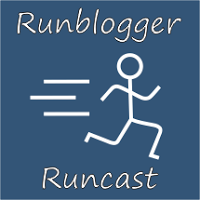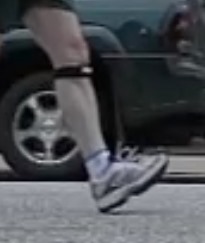 Image by Getty Images
Image by Getty Images The topic of running footstrike is a hot one right now in the running community. While it’s admittedly just a single element of the overall running gait, it’s one that runners have latched onto because of it’s apparent relationship to footwear (e.g., heel height, cushioning, etc.), and it’s one of the easier gait aspects for a runner to consciously focus on while out on the road or trail.
The vast majority of runners strike with the heel when they hit the ground, and the recent minimalist running trend has led to more and more runners attmepting to shift to a more midfoot or forefoot landing style. Although there is anecdotal evidence out there supporting the shift, what we don’t know definitively, at least from a scienftific standpoint, is whether shifting from a heel strike to a midfoot or forefoot strike will result in a more efficient gait, or one that is less prone to causing injury.
Well, here’s another anecdote, this time from elite runner Dathan Ritzenhein. If you don’t know who Ritzenhein is, he set the US record for the 5K last year (since broken by Bernard Lagat) and represented the United States in the Marathon at the 2008 Summer Olympics in Beijing. In an article on the Runner’s World website by Peter Gambaccini, Riteznehein discusses his plans to race in the New York City Marathon this Fall, as well as how he has modified his gait to from a heel to a midfoot strike to help deal with some recurring injuries. His coach at Nike, Alberto Salazar, also discusses Ritzenhien’s gait change. What I like about this article is that it shows how an elite feels about the move from heel to midfoot, and also that he has some personal idiosyncracies in his anatomy that necessitated shoe modifications. All to often we forget that we humans are highly variable, and that what works for one may not work for all.
Quote from Alberto Salazar on Ritzhenhein’s injuries and his shoe insert in Gambaccini’s Runner’s World article:
“Dathan continues to have some foot problems which he’s had for years. I had thought that just by keeping him on soft surfaces and making sure that he’s recovered that this would be taken care of. But he continued to have metatarsal problems…
…We finally decided to do some in-depth studies. Gordon Valiant, who’s the head of biomechanics for Nike, did an evaluation of Dathan and he was able to find some things that were unique to Dathan – just the way he runs and how he strikes his foot. With that, we have modified inserts – I wouldn’t call them orthotics, I would just call them an insert in the shoe with a sort of excavation type depression in this area where he has an abnormal amount of force near his third metatarsal (on his right foot). And with that, it seems to have alleviated his symptoms completely…”
Quote from Dathan Ritzenhein on his gait change in Gambaccini’s Runner’s World article:
“I was definitely more of a heel-striker, so I’m definitely getting on to my midfoot more. I wouldn’t say I get all the way up to my toe. I think I’m more efficient for the marathon if I stay in more of a midfoot stance anyway. But definitely, the posture of my body and the range of my stride, that’s all stuff that has just kind of come through. Initially, the problem was we tried to focus solely on changing that without being strong enough to do it. We went back to trying to build it up from the strength side so it (the stride change) naturally took over instead of trying to think about it consciously. So that’s the point where we’d at now; it’s just a subconscious thing and I don’t have to consciously think about changing my form anymore.“
What I like about these quotes is that it shows that Ritzenhein seems to have benefited both from an understanding of his individual anatomy (i.e., his metatarsal structure), as well as a shift in gait. It also shows the importance of a slow strength buildup when trying to alter your stride to a more midfoot or forefoot style (something anyone who tries running in Vibrams or barefoot is well aware of). It will be interesting to see if/how Dathan’s new running form will serve him at NYC this Fall – I’ll definitely be pulling for him!
To read the full article on Dathan Ritzenhein by Peter Gambaccini on Runner’s World, click here.
Update 7/21/2010: Amby Burfoot was kind enough to cite this post on his Peak Performance blog – for his take on the Ritzenhein story, click here.
Update 7/22/2010: For a post on the other half of what Amby Burfoot talked about in his article, check out this post: The Pronation Control Paradigm is Starting to Crumble: Review of a Study in the British Journal of Sports Medicine



















Speak Your Mind